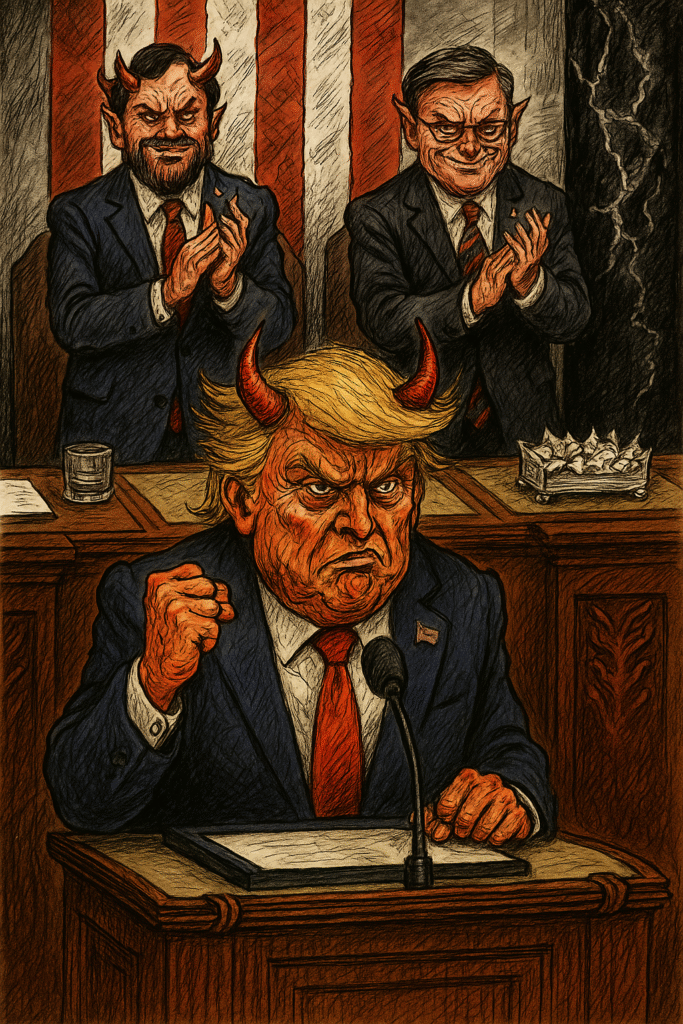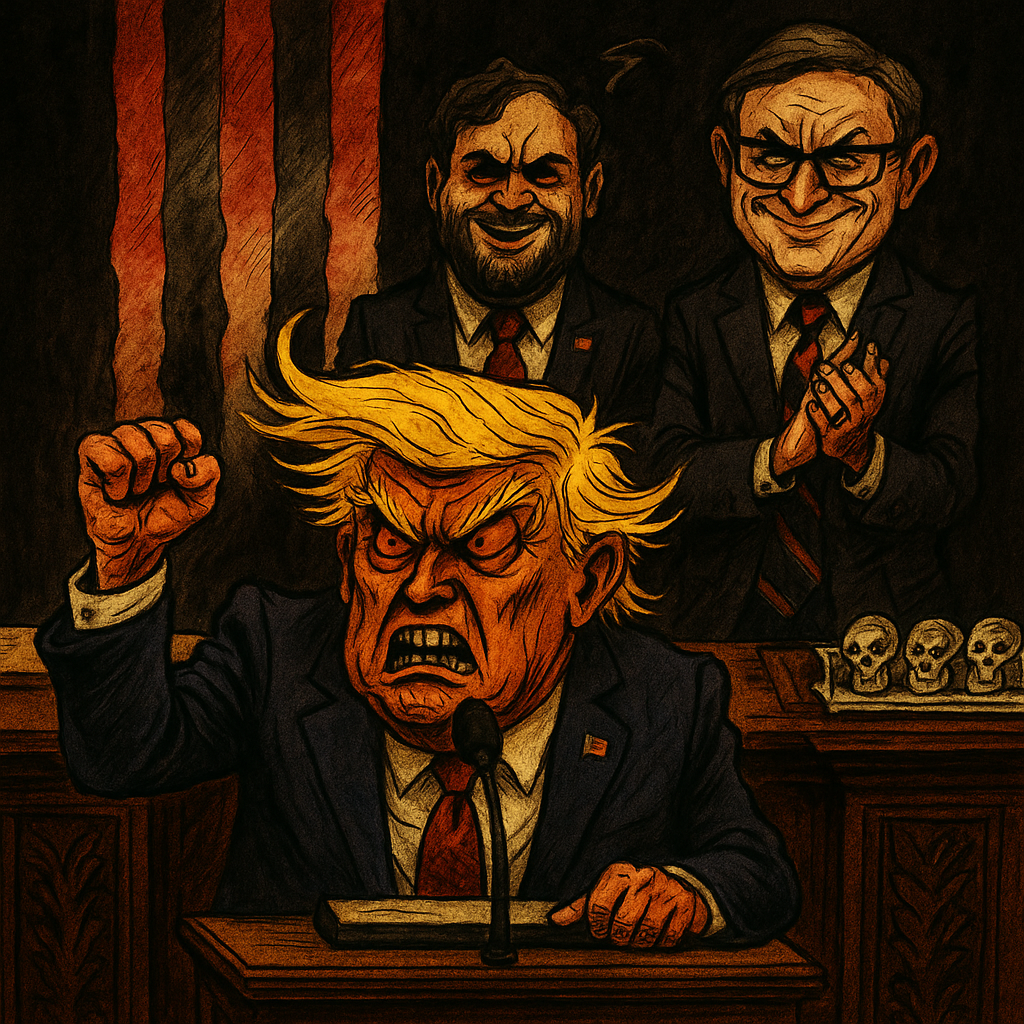A Crazy Start to May
In just the past two weeks, former President Donald Trump has executed a flurry of policy changes that have dramatically altered the U.S. government’s direction. From sweeping tax cuts and controversial immigration shifts to renewed international alliances and media crackdowns, the second Trump administration has firmly asserted its agenda with remarkable speed and breadth.
Below is a breakdown of the major developments and what they could mean for the future of America.
📜 Domestic Policy: The One, Big, Beautiful Bill
One of the most talked-about legislative packages introduced recently is what Trump calls “The One, Big, Beautiful Bill.” Unveiled in early May 2025, the bill proposes more than $5 trillion in tax cuts, with a focus on:
- Permanently reducing income tax brackets
- Allowing deductions for tipped wages
- Permitting interest deductions on car loans
To offset these enormous cuts, Trump’s administration plans to reduce Medicaid funding by $900 billion. This move could potentially impact up to 8.6 million Americans, eliminating their access to health services. The bill also shifts much of the burden for food assistance programs to state governments and proposes over $150 billion in defense spending, with another $69 billion earmarked for enhanced border security.
This bill marks the most aggressive rollback of federal spending and tax reform since the Reagan era and could reshape America’s social safety net for decades.

💊 Drug Pricing Reform: Big Pharma’s New Reality
On May 12, Trump signed an executive order aimed at tackling prescription drug prices. The policy ties U.S. drug prices to international benchmarks from developed countries, potentially lowering costs by up to 80% for common medications.
The Department of Health and Human Services is now mandated to negotiate drug prices directly with pharmaceutical companies and expand import channels from countries like Canada, Australia, and select European nations. Trump called the order “a total win for the American people” and claimed it would “save trillions.”
This move is widely popular among voters but has sparked intense lobbying pushback from pharmaceutical companies.
🛠️ Deregulation and Energy Department Overhaul
The Department of Energy, under Trump’s direction, proposed over 40 regulatory reversals. These include the elimination of energy-efficiency standards for appliances and rollbacks on anti-discrimination protections that previously protected individuals based on gender identity, age, and disability.
Trump’s team frames these changes as “efficiency-focused,” while critics argue it’s a broad dismantling of civil rights protections and climate-conscious standards.
📺 Media Crackdown: Defunding NPR and PBS
Through Executive Order 14290, Trump ordered the immediate termination of federal funding to NPR and PBS, accusing the outlets of “extreme liberal bias.” The Corporation for Public Broadcasting has filed lawsuits challenging the move, citing it as an attack on press freedom.
This marks the first time a U.S. president has attempted to dismantle public broadcasting by executive order, intensifying the administration’s ongoing feud with the media.
👮 Military Policy: Reversal on Transgender Service Members
Trump also revived the controversial transgender military ban via Executive Order 14183. The policy requires all military personnel to serve according to their biological sex and prohibits new recruits who identify otherwise. Civil liberties organizations quickly filed lawsuits, and a federal judge in California issued a temporary injunction halting its enforcement.
This echoes Trump’s previous term, where a similar ban was enacted and later overturned by the Biden administration.
🌍 Foreign Policy: Sanctions Lifted, Deals Struck
During a high-profile trip to Saudi Arabia, Trump announced the lifting of U.S. sanctions on Syria, describing it as a gesture toward regional stability. In return, Saudi Arabia agreed to:
- Invest $600 billion in U.S. infrastructure and defense
- Finalize a $142 billion arms deal, the largest in American history
Critics claim the move rewards human rights abusers, while Trump argues it brings jobs and influence back to the U.S.
🧾 Tariff Tsunami: A Trade War Reignited
In a bold move, Trump declared a national economic emergency and imposed:
- A 10% blanket tariff on all imports
- Up to 54% tariffs specifically targeting Chinese goods
These measures are the most aggressive protectionist policies since the Smoot-Hawley Tariff Act of 1930. Global markets have responded with uncertainty, and the World Trade Organization is preparing to mediate disputes.
However, the U.K. emerged as a winner, signing a new trade agreement with the U.S. that reduces tariffs on vehicles, steel, and aluminum while boosting American agricultural exports.
🧭 Controversial Immigration Decisions
In an unprecedented move, the Trump administration granted refugee status to 59 white South Africans, citing persecution based on race. Immigration advocates argue this selectively favors white applicants while denying thousands of Black, Hispanic, and Middle Eastern asylum seekers.
In parallel, the administration is seeking Supreme Court approval to:
- End humanitarian parole for over 500,000 migrants
- Label certain gang members as “enemy combatants,” opening the door to indefinite detention without trial
⚖️ Legal Hurdles and Institutional Pushback
Despite the aggressive pace, not everything is going smoothly for Trump. A federal court in San Francisco blocked a sweeping federal workforce restructuring plan that included mass layoffs and consolidation of agencies. The court sided with labor unions who argued the overhaul violated due process protections.
In another controversy, the administration is petitioning the Supreme Court to allow Elon Musk’s newly created Department of Government Efficiency access to Social Security data. Privacy experts and lawmakers from both parties have raised alarms.
Final Thoughts
Whether you view these actions as visionary reforms or dangerous overreaches, one thing is clear: Donald Trump is not wasting time. The past 14 days have shown a presidency in full throttle, reshaping nearly every major aspect of American life.
As legal challenges mount and political polarization deepens, the next few weeks could determine how far these sweeping changes will go.

